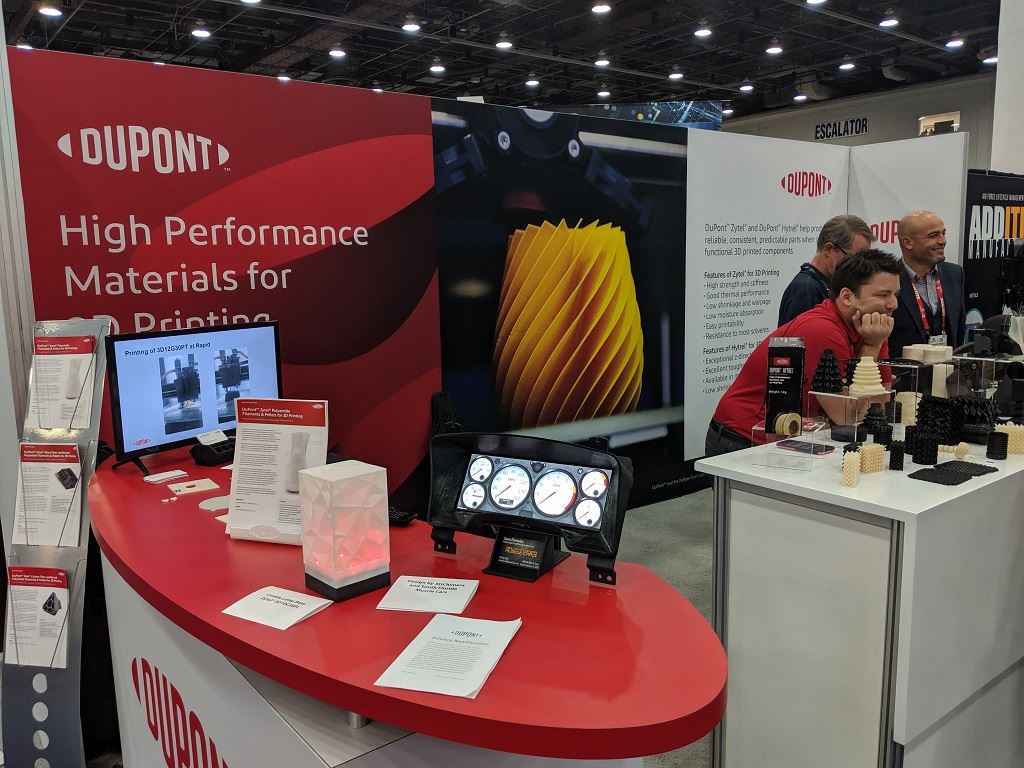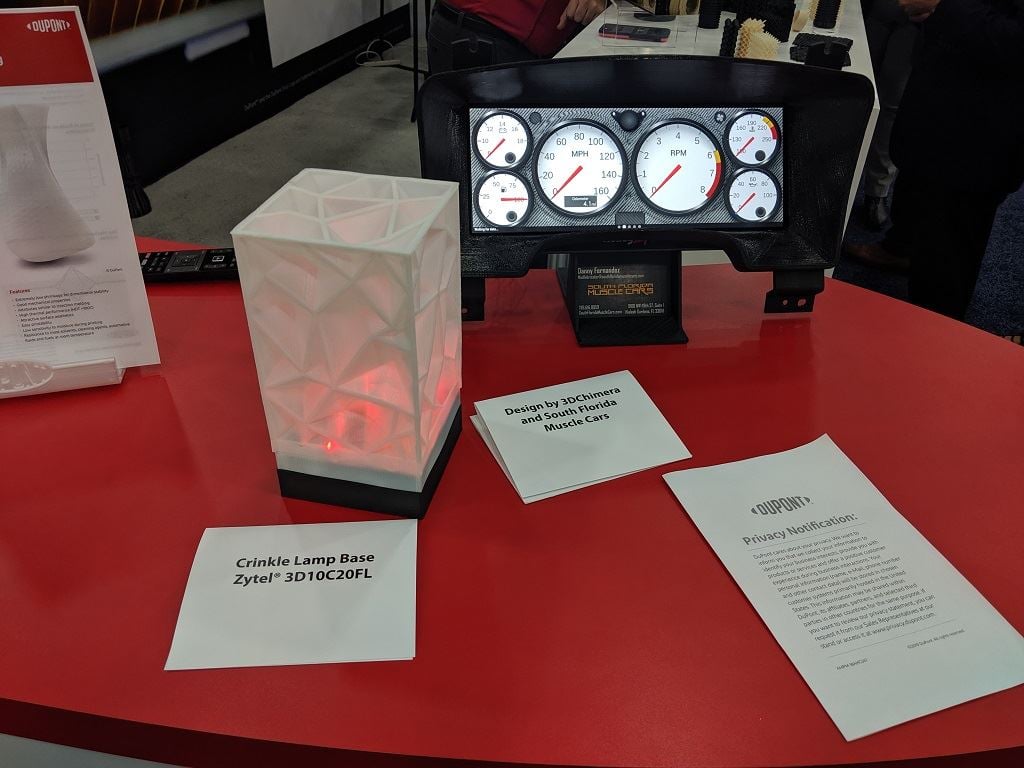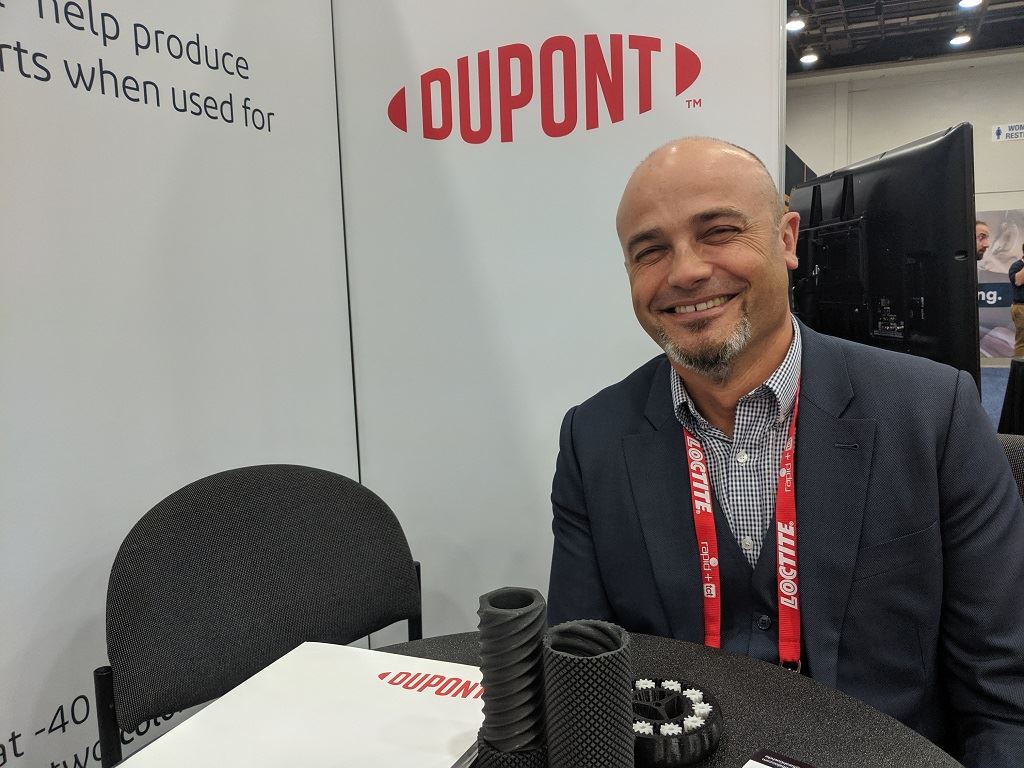![Christophe Paulo shares details on DuPont’s 3D printing materials and strategies [Image: Fabbaloo]](https://fabbaloo.com/wp-content/uploads/2020/05/dupont1a_img_5eb096569b818.jpg)
DuPont has introduced eight new high-performance 3D printing materials.
Ahead of RAPID + TCT, the company teased “multiple” new semi-crystalline 3D printing materials to come. They’ve delivered, with six new pellet types and two filaments.
DuPont is a giant in plastics. If it’s a plastic and you’ve heard of it, there’s a pretty decent chance it originated with DuPont. Teflon, for example, was theirs, along with nearly “any fancy lines of plastics on the market,” as Christophe Paulo, Strategic Marketer, EMEA, DuPont told me when we sat down to discuss the company’s work in 3D printing.
The materials come from the DuPont Transportation & Advanced Polymers business unit of the DowDuPont Specialty Products Division and introduce new materials under familiar industrial plastic names. Namely, that is, Zytel polyamide and Hytrel thermoplastic polyester elastomer (TPC-ET).
“We are stepping into materials for 3D printing. Development of machines is starting to become affordable for runs up to 10,000 parts. That’s machines; what’s missing is still the material,” Paulo said. “Basically, there was PEEK or there was PLA and ABS. You could overshoot or not be functional. What’s between those is our bread and butter.”
DuPont’s foray into 3D printing is by demand. Their customers came to them, Paulo explained, “asking for materials to do 3D printing on a larger scale with properties similar to injection molding.”
So with that they have introduced:
-
Zytel 3D12G30PT Pellets with 30% glass fiber reinforcement (black)
-
Zytel 3D12G50PT Pellets with 50% glass fiber reinforcement (black)
-
Zytel 3D10C20PT Pellets with 20% carbon fiber reinforcement (black)
-
Zytel 3D1000PT Pellets (natural)
-
60 Shore D grades:
-
Hytrel 3D4100PT Pellets (natural)
-
Hytrel 3D4100FL Filament (black)
-
-
40 Shore D grades:
-
Hytrel 3D4000PT Pellets (natural)
-
Hytrel 3D4000FL Filament (black)
-
The Zytel materials offer “real reinforcement,” Paulo emphasized:
“These are the types of reinforced nylon used in injection molding and blow molding. You can compare the data to our standard materials.”
3D printing offers, of course, capabilities that injection molding and blow molding don’t (hence the demand). He held up a gear that had been made with both Zytel and Hytrel materials “in one go; you can’t do that with injection molding.”
All of the new materials are designed for usability, and DuPont has been closely focusing on the realistic market opportunities. Among several major areas of application Paulo noted as being especially interesting to DuPont are aftermarket and spare parts, mass customization, and medical applications.
As of the time of our conversation, DuPont is focused on pellet and filament material types, with no intent to move into powders. That market is well established already, Paulo noted.


The company has forged partnerships with machine manufacturers and is starting to partner as well with software companies as it becomes more ingrained in the broader 3D printing ecosystem. More resellers are also stocking their materials.
Most important to DuPont is that it delivers on its specialty: materials.
“By delivering our products as pellets as well as filaments, DuPont gives customers the flexibility to use the same material across different processes. For instance, they can create prototypes with fused layer modeling and final parts with pellet extrusion modeling – or even injection molding for very high volumes – while maintaining consistent properties. The addition of pelletized materials to our offering supports the trend toward mass customization using 3D printing,” Paulo noted in the press release announcing the portfolio additions.
Familiarity with known materials and that ability to gain those consistent properties across a variety of production processes is a major benefit that major chemical companies can claim.
And DuPont is hoping to continue on this path.
“Our goal is to introduce all the blockbuster materials we’ve seen in plastics,” Paulo told me in closing on DuPont’s 3D printing strategy.
Via DuPont











An inventive designer has developed a method for producing 3D paper objects using recycled paper and 3D printed molds.